
8th Standard
Science Textbook Lesson
Chapter 11
Force & Pressure
NCERT Syllabus
- Subject:
- Applied Science
- Material Type:
- Diagram/Illustration
- Textbook
- Date Added:
- 07/11/2019

8th Standard
Science Textbook Lesson
Chapter 11
Force & Pressure
NCERT Syllabus

Lessons and tools for K-12 science teaching and after-school programs.
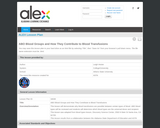
This lesson will demonstrate why blood transfusions are possible between certain types of blood. ABO blood types will be reviewed and students will determine which blood types are the universal donor and recipient. This lesson was adapted from blood types lesson, Discovery Science Center, 2500 N Main St Santa Ana, CA 92705. This lesson results from a collaboration between the Alabama State Department of Education and ASTA
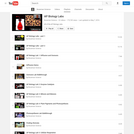
Series of videos that can be used in an AP Biology Labs class created by Paul Anderson- Bozeman Science

Paul Anderson's video play list of videos that can be used in a AP Biology Science Practices course

Series of videos that can be used in a AP Biology Video Essentials class created by Paul Anderson- Bozeman Science
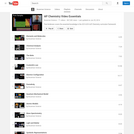
Paul Anderson's video playlist of videos that can be used in a AP Chemistry Video Essentials class
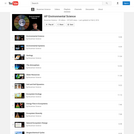
Paul Anderson playlist of videos that can be used in an AP Environmental Science Class
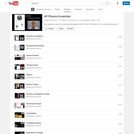
Paul Anderson video playlist for videos that can be used in a AP Physics Essentials class

Most exoplanets are found through indirect methods: measuring the dimming of a star that happens to have a planet pass in front of it, called the transit method, or monitoring the spectrum of a star for the tell-tale signs of a planet pulling on its star and causing its light to subtly Doppler shift. Space telescopes have found thousands of planets by observing “transits,” the slight dimming of light from a star when its tiny planet passes between it and our telescopes. Other detection methods include gravitational lensing, the so-called “wobble method.”---------------------------------------Distant Nature: Astronomy Exercises 2016 by Stephen Tuttle under license "Creative Commons Attribution Non-Commercial Share Alike".

Using the planetarium program Stellarium, you will display the evening sky just after sunset for the date and location of your birthplace. You will determine the times of the sunrise, sunset, and moon rise on your birthday, note the phase of the moon, and observe planetary positions and visibility. ---------------------------------------Distant Nature: Astronomy Exercises 2016 by Stephen Tuttle under license "Creative Commons Attribution Non-Commercial Share Alike".

Welcome to Astronomy 1020 Lab 1! The Introduction to Stellarium Software lab will cover the installation, navigation, and use of Stellarium, the software which will be used to complete ASTR 1020 lab work.Stellarium [Copyright © 2004-2011 Fabien Chereau et al.]

This activity will focus on Kepler's Law which concerns planetary motion.---------------------------------------Distant Nature: Astronomy Exercises 2016 by Stephen Tuttle under license "Creative Commons Attribution Non-Commercial Share Alike".

Edwin Hubble examined the spectra of many galaxies, looking for the red (longer wavelengths) or blue (shorter wavelengths) shifts in the spectra, indicating relative motion. To his surprise, not only did all of the galaxies appear to be moving, but all were moving away from us, no matter the direction of the galaxy. In addition, he found most galaxies exhibited a redshift, and the redshift was larger the further it was from our galaxy.Distant Nature: Astronomy Exercises 2016 by Stephen Tuttle under license "Creative Commons Attribution Non-Commercial Share Alike".

Galileo, in 1612, demonstrated that the Sun rotates on its axis with a rotation period of approximately one month. Our star turns in a west-to-east direction, like the orbital motions of the planets. The Sun, however, is a gas and does not have to rotate rigidly, the way a solid body like Earth does. Modern observations show that the Sun’s rotation speed varies according to latitude; that is, it’s different as you go north or south of the Sun’s equator. Between 1826 and 1850, Heinrich Schwabe, a German pharmacist and amateur astronomer kept daily records of the number of sunspots. What he was looking for was a planet inside the orbit of Mercury, which he hoped to find by observing its dark silhouette as it passed between the Sun and Earth. Unfortunately, he failed to find the hoped-for planet, but his diligence paid off with an even more important discovery: the sunspot cycle. He found that the number of sunspots varied systematically, in cycles about a decade long. In this laboratory, you will engage in tracking the Sun like Galileo and Schwabe during a six-day cycle and then do a simple calculation of the rotational period of our sun.---------------------------------------Distant Nature: Astronomy Exercises 2016 by Stephen Tuttle under license "Creative Commons Attribution Non-Commercial Share Alike".

A plot of luminosity vs. time is a ‘light curve’. In this laboratory, we will use a light curve to determine the diameter of two stars in a binary system. --------------------------------------- Distant Nature: Astronomy Exercises 2016 by Stephen Tuttle under license "Creative Commons Attribution Non-Commercial Share Alike".

This laboratory measures the parallax shift of the Delta Leonis and uses a Spectral Classification Table to calculate the radius of this star from its temperature.---------------------------------------Distant Nature: Astronomy Exercises 2016 by Stephen Tuttle under license "Creative Commons Attribution Non-Commercial Share Alike".

This laboratory consists of two parts. In part A, we will follow Hubble’s method of measuring distances. Using pulsation time periods, we will obtain the absolute magnitude of a Cepheid variable and convert this absolute magnitude into luminosity which will, in turn, give us the distance. In Part B, we will use spectral shift (the Doppler effect) to determine the Hubble Constant. --------------------------------------- Distant Nature: Astronomy Exercises 2016 by Stephen Tuttle under license "Creative Commons Attribution Non-Commercial Share Alike".

In Part B, we will use a Python computer coding script to obtain a spectral redshift of a galaxy (M100). From this redshift, we will use the Doppler formula to find a recession speed. From this speed, we will apply Hubble’s Law to obtain the Hubble Constant.---------------------------------------Distant Nature: Astronomy Exercises 2016 by Stephen Tuttle under license "Creative Commons Attribution Non-Commercial Share Alike".
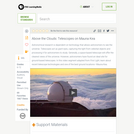
This video segment adapted from First Light explains why the highest peak in the Pacific, Mauna Kea, is an ideal site for astronomical observations. Featured are new telescope technologies that allow astronomers to explore the universe in more depth.